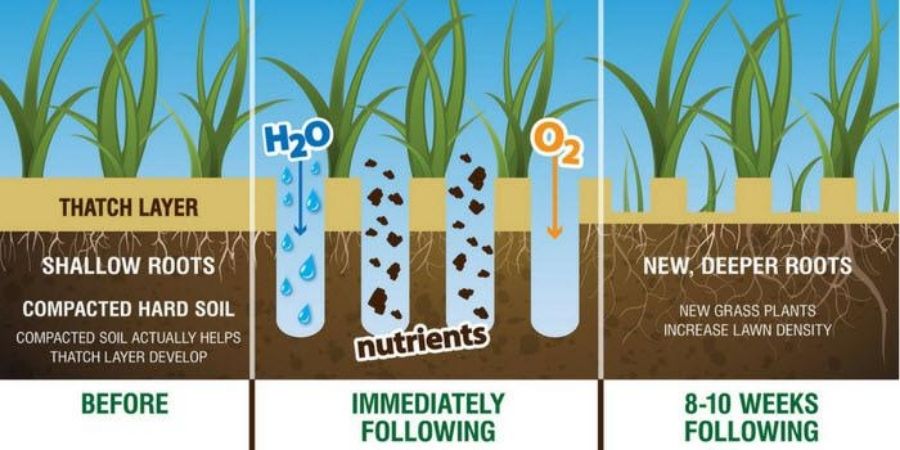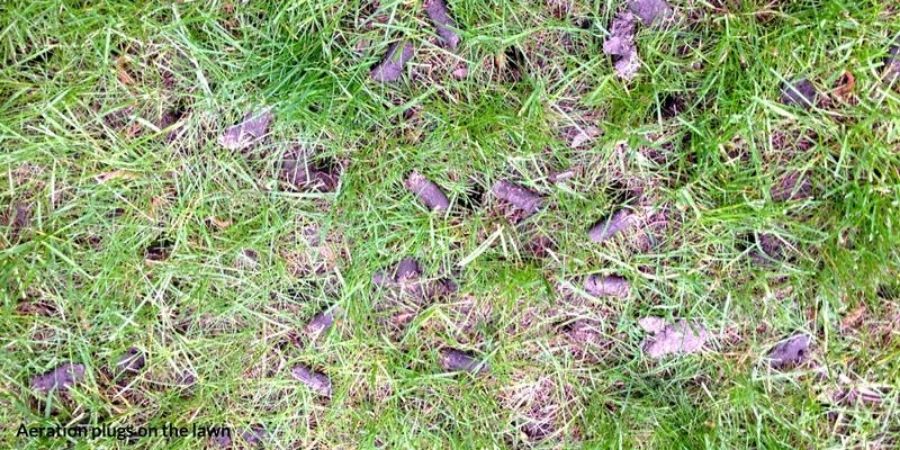Lawn Aeration Tips
- Milorganite AgronomistAugust 22, 2020
It’s the best thing you can do for your lawn this fall.
Aeration is an essential lawn-care practice for maintaining a healthy, vigorous lawn. Unfortunately, it’s one that is often neglected. If it’s not part of your annual lawn maintenance schedule, add it. Your lawn will appreciate it.
Here are some tips for aerating your lawn this fall.
What are the benefits of aerating my lawn?
Aeration helps lawns in a number of ways. It loosens compacted soil by poking holes in the soil. This allows water, air and nutrients to reach the grass roots, and gives them room to expand and deepen. It can also improve drainage and help prevent thatch build-up.
How do I know it is time to aerate?
There are a few signs that indicate your lawn would benefit from being aerated.
High-traffic areas such as paths, play areas, areas over which vehicles are driven, including construction equipment used in building new homes, will quickly compact the soil and should be aerated annually.
You may also notice puddles or water quickly running off the lawn. First, check to see if the problem is excessive thatch—greater than 1”. If this is the case, dethatch prior to aerating.

Aerate your lawn before overseeding or fertilizing with Milorganite, which can be applied simultaneously. Mix one part grass seed to four parts Milorganite (1:4) by weight and use a spreader to distribute. The Milorganite will help you see where grass seed has been spread and it’s a good starter fertilizer because it’s non-burning and won’t harm grass shoots.
When is the best time of year to aerate?
The best time to aerate the when grass roots are actively growing, otherwise it can damage the roots. Roots will have the opportunity to expand and while it stores nutrients prior to winter. Avoid aerating when the lawn is dormant.
The best time of year to aerate depends on the grass varieties in your lawn. Cool-season and warm-season varieties are best aerated at different times of the year.
Cool-season grasses, such as Kentucky Bluegrass, Fescue and Ryegrass thrive in cooler fall temperatures. Aerate cool-season grasses in early fall, about four weeks prior to the first average frost. The second-best time of year to aerate cool-season grasses is in early spring, after mowing the lawn twice.
Warm-season grasses, including Bahia, Bermuda, Buffalo, Centipede, St. Augustine and Zoysia varieties should be aerated in mid-spring or early summer.
It should take about 3-4 weeks for the lawn to recover and show signs of new growth.
Do different types of soil need to be aerated more or less often?
How often to aerate also depends on the soil. Clay soil holds water and compacts easily, and should be aerated annually. Although sandy soils have a looser structure, over time the sand settles and compacts. In this case, aerating in alternate years should be fine.

What type of aerator should I use?
There are two types of power aerators: hollow tine and core. Hollow tine aerators have spikes that are driven into the ground. Unfortunately, soil is pushed aside and can actually cause additional compression.
I recommend using a core aerator. It removes cores of soil that are about the width of a dime and about 4” long—the deeper the core the better. Cores are pulled out about every 4-6”, depending on the aerator—the more holes the better.
Core aerators are general available for hourly rental at garden centers and big box stores. You’ll probably want to go in on the rental with a neighbor or two to divide the cost, as well as labor. Core aerators are very heavy and awkward, and will require more muscle than one person can provide. You’ll also need a full-sized truck bed.
How does an aerator work?
Water the lawn the night before you plan to aerate your lawn. This makes it easier to remove soil cores.
Choose an area to practice. Aerators can easily damage irrigation heads, decorative edging and concrete if it gets away from you.
Aerate in one direction and again in the opposite direction. If you’re feeling particularly ambitious or the soil is very compacted, you could do three or even four passes. Again, the more holes the better.
Your lawn will look like a huge flock of geese have left gifts on your lawn. Leave the cores to naturally break down. Your lawn may look a little rough when you’re finished. Give it a few weeks to recover and it will look much better.
Always wear protective clothing—long pants, steel-toe shoes (optimum) and eye protection.
Aeration is an annual or biannual lawn-care practice you should include in to your maintenance schedule. Most people don’t have an aerator in their garage like they do a mower or trimmer, so renting an aerator is somewhat inconvenient by comparison. You have to plan ahead—and gather strong neighbors.

